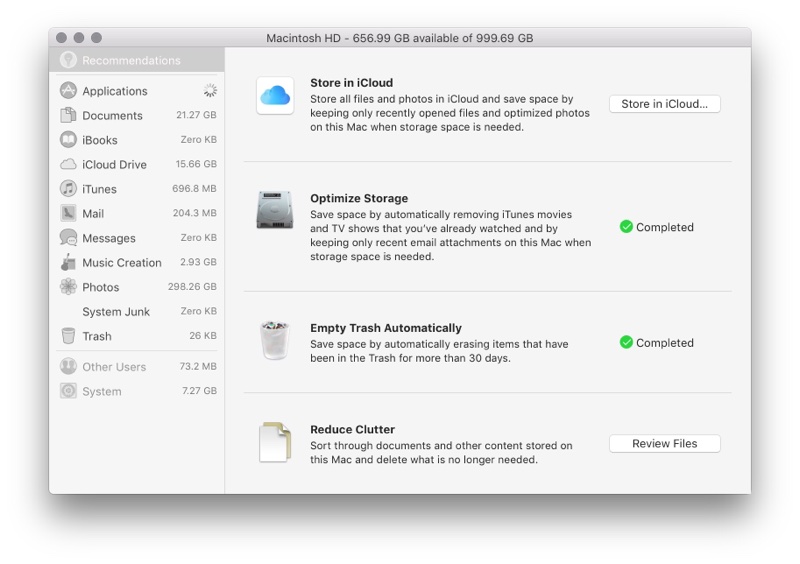

private/var/tmp/ storage system cache is a folder, it will clear when the system reboots normally, but sometimes it does not. But Quick View feature relies on caching feature can be more smooth, and these cache files will always increase, remove the cache using the following command $ sudo rm -rf /private/var/folders/ĭelete temporary files - you can save 500MB-5GB hard disk space Quick preview feature is the built-in OS X system file preview function, you can click the box after selecting any file in the Finder to see the details of the file.

The system will continue to generate log files, so you can regularly execute this command.ĭelete cache files generated by quickly preview - you can save a 100MB-300MB hard disk space The system log file is used to debug and troubleshooting, if you feel there is no use, you can use the following command to remove $ sudo rm -rf /private/var/log/* If you execute the command, then you will not be able to use the system's text-to-speech function.ĭelete all system logs - can save a 100MB-2GB hard disk spaceĪs you use your Mac more and more time, system log files are also more and more, based on the amount of computer errors and services, these documents will be more and more. Then the delete command to delete all the voice files $ sudo rm -rf Voices/* In the terminal application, use the following command to first locate the folder where the file $ cd /System/Library/Speech/ You can delete these files to regain disk space. If you are not applicable text-to-speech feature, then you certainly would not use the OS X built-in voice files. Remove the system voice files - you can save the hard disk space 500MB-3GB+ Of course, if you want to re-open Safe Sleep feature, just below command. $ sudo chmod 000 /private/var/vm/sleepimage Use the following command to delete the file $ sudo rm sleepimageįinally, we want to prevent OS X continues to create the file, so we need the following command generates an empty file can not be replaced $ sudo touch sleepimage Then navigate to /private/var/vm/ delete files that already exist sleep image $ cd /private/var/vm/ If you want to disable SafeSleep function, we need to enter the following command in a terminal: $ sudo pmset -a hibernatemode 0

However, we can use OS X's auto-save feature to save his job at the time the battery will be depleted.

Close SafeSleep state can not let the system automatically create the file, the disadvantage is that when the Mac is not the battery, you can not revert to the previous. sleepimage files with Mac computers as large memory, which means that if your memory is 4GB, the file will have 4GB, if it is 16GB, the file will have 16GB. This sleep mode when the battery Mac will not sleep or the contents of memory stored on sleepimage files on the hard disk. The following command can turn off the OS X native sleep function, which is SafeSleep. For me, it’s one last thing I have to use VNC for.Disable Safe Sleep Sleep mode - can save a 4GB-16GB of space It’s that simple and most of the other options work in the same way.
CHECK DISK SPACE MAC COMMAND HOW TO
If you don’t know how to do that check out this article. If your going to be doing this to a remote location – ssh to that server.It lets you do everything you can in Disk Utility from the command line: List partitions, Unmount/mount drives, verify and repair drives. The application is called diskutil, essentially it’s DiskUtility.app without the gui goodness and is perfect for my setup since VNC is painfully slow. Hopefully it will help you out as much as it has me. Most of the problems I seem to encounter have to do with messed up file permissions in OS X Tiger, so this comes in really handy for me. It’s pretty handy and works well with both OS X Server and regular OS X. In my quest to use VNC less, I’ve come across a pretty helpful command line application to check the health of my server’s disk drives.


 0 kommentar(er)
0 kommentar(er)
